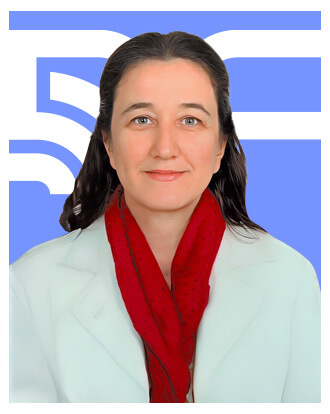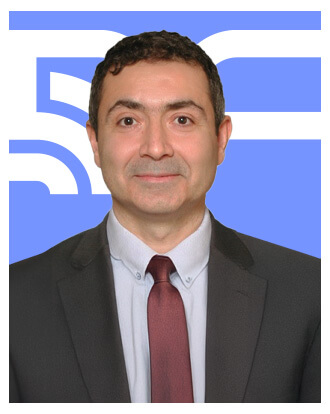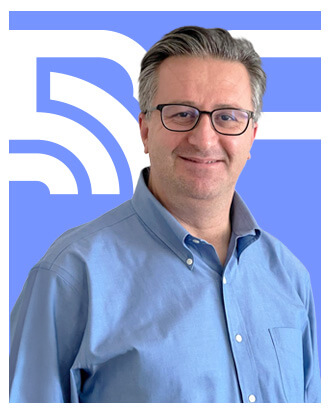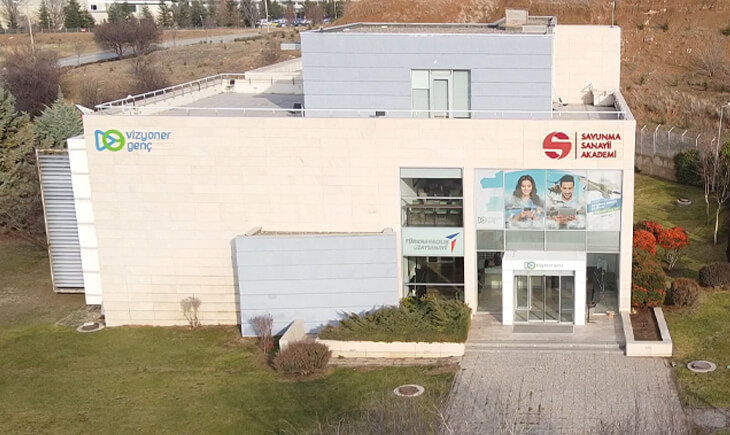





In line with the needs of the defense industry, practical training will be provided to industry professionals through the RF School concept in areas such as Radio Frequency (RF) microwave circuits, antenna design, and wireless communication technologies, with the aim of enhancing expertise in these fields.
Training sessions are designed with practical applications using signal generators, spectrum analyzers, RF cables, connectors, oscilloscopes, and various antennas to support the theoretical content.
The training programs are primarily tailored for professionals in the defense sector. Potential participants include employees of companies and organizations involved in project execution, personnel from the Presidency of Defense Industries (SSB) as the acquisition authority, and representatives from public institutions and organizations serving as the requirement authority. Furthermore, bootcamp-style programs can be designed specifically for recently graduated engineers from relevant academic disciplines.
The training programs are developed and conducted with the support of industry professionals and academics with relevant sector experience. In this context, the Expert Advisory Board established for the RF School defines its vision and regularly provides feedback on the training content.
Expert Advisory Board (EAB)” within the RF School provides feedback and gives recommendations on the following topics:
Coordinators” within the RF School perform the following activities based on the needs of the Defense Industry:
You can create a preliminary request for an existing course by selecting it from the "Courses" list and filling in the relevant sections under the "Request" tab.
You can create a preliminary request for an existing course by selecting it from the "Courses" list and filling in the relevant sections under the "Request" tab.
If the course you need is not in the existing list or requires customization, you can submit the course content, location, and preferred instructor (if any) here.
If the course you need is not in the existing list or requires customization, you can submit the course content, location, and preferred instructor (if any) here.

Lokman Kuzu

Ahmet Fazıl Yağlı

Murat Sever

Demet Sevil Armağan Şahinkaya

Alper Yıldırım

Mesut Gökten
This course provides an introduction to fundamental topics in RF, microwave, and wireless communication engineering.
The knowledge of active and passive microwave components and the essential performance criteria of these components form the basis of RF design engineering. This training aims to make the participants competent in essential microwave elements and to give them the skills to make performance measurements of these elements.
Part of the training will be given in the classroom and through presentations. In the practical session, the following studies will be carried out using VNA (Vector Network Analyzer) on ready-made examples in a way that the participants will experience.
A bachelor’s degree in electrical and electronics engineering or physics
Recommended Source: High Frequency Techniques: An Introduction to RF and Microwave Engineering by Joseph F. White
This course covers RF and microwave frequency ranges, frequency bands, time and frequency domains, modulation, and more.
To become a qualified microwave engineer, one must understand the relationship between signals in the frequency and time domains, perform accurate power conversions, and grasp how wavelength relates to the physical dimensions of electronics at an early stage. This training package helps participants understand the basics of frequency, wavelength, and physical dimensions of electronics, and perform decibel-based power conversions.
Part of the training will be given in the classroom and through presentations. In the practical session, the following studies will be carried out:
A bachelor’s degree in electrical and electronics engineering or physics
Recommended Source: High Frequency Techniques: An Introduction to RF and Microwave Engineering, Joseph F. White
This course provides information on the fundamental characteristics of antennas, propagation of electromagnetic waves, and the characteristics of wireless communication paths.
In wireless communication systems, antennas are the most extreme elements that enable the transmission of electromagnetic waves (EMW) between the transmitter and receiver units. For this reason, it is critical for antenna engineering to know the basic performance parameters of antennas used as the fundamental component of the wireless communication system and to understand the relationship between the electromagnetic waves emitted from the antenna and the environment in which it is located. This training package aims to make the participants understand the basic antenna parameters and design criteria with their constraints and to explain the behavior of the transmitted electromagnetic waves in the environment in which they interact
Part of the training will be given in the classroom and through presentations. Depending on the demand, basic antenna design, antenna fabrication using basic materials, and antenna performance measurement using VNA will be carried out in practical application. The reasons for the performance losses of the fabricated antennas are discussed together.
A bachelor’s degree in electrical and electronics engineering or physics
Recommended Source: C. Balanis, Antenna Theory
This course covers the fundamentals of transmission lines and distributed systems, reflection coefficient, VSWR, power transfer efficiency, and more.
The relationship between the operational wavelength and the physical dimensions of the electronics to be designed directly affects the operating performance of the designed microwave elements. This training package aims to provide the participants with an understanding of the causes and solution steps for transmission line mismatches, which are the top source of problems (typically, issues of reflection and impedance matching)
Part of the training will be given in the classroom and through presentations. In the practical session, the following studies will be carried out:
A bachelor’s degree in electrical and electronics engineering or physics
Recommended Source: Mikrodalga Teknikleri 1, Birsen Yayınevi, Prof. Dr. Selçuk HELHEL
This course covers the fundamentals of RF active and passive devices, power dividers, isolators, phase shifters, and more.
There are active and passive essential components as part of communication systems to be designed in the high-frequency region, including the optical region. Knowing what these components are, and their working principles is of great importance for RF Microwave design engineering. This training package aims to teach the participants the design criteria of the essential passive circuit elements widely used by microwave design engineering and to demonstrate the primary performance measurements of the selected elements designed practically. Thus, participating design engineers will have competence in designing in a simulation environment, realizing the designed product, and measuring the fundamental performance criteria of the realized product using a Vector Network Analyser (VNA)
Part of the training will be given in the classroom and through presentations. The practical application will include designing using CST Microwave Studio or ADS, printing with a 3D printer, and performing measurements using Vector Network Analyser (VNA).
A bachelor’s degree in electrical and electronics engineering or physics
Recommended Source: Microwave Transistor Amplifiers Analysis and Design, Guillermo Gonzalez
This course covers the characteristics of filters, various types of filters such as Chebyshev, Butterworth, and Elliptic filters, and application examples.
Filters are indispensable elements of all communication systems, but filter design in the high-frequency region requires additional knowledge and skills. This training package aims to gain filter design skills in the high-frequency region by considering the criteria required by this frequency region and to gain measurement skills based on practical measurement of the performance of the filters produced.
Part of the training will be given in the classroom and through presentations. In practical application, the following studies will be carried out:
A bachelor’s degree in electrical and electronics engineering or physics
Recommended Sources:
This course provides information on the fundamentals of antennas, antenna characteristics, various types of antennas, and antenna measurements.
Antennas are the end elements of a wireless communication environment. It is possible to design antennas with very different characteristics and utterly different physical appearances depending on the requirements. This training package aims to teach the participants the basic antenna concept and to gain the ability to design antennas for different applications in different frequency ranges. Another aim is to provide measurement skills by completing the production of selected antennas for the designed antennas and performing performance measurements on the produced antennas. In this way, the participants will gain the ability to use simulation programs related to antenna design and measure antenna performance on selected antennas returned to production.
Part of the training will be given in the classroom and through presentations. In practical application, three basic antenna designs and production will be done using MATLAB or CST Microwave Studio. These are in order;
A bachelor’s degree in electrical and electronics engineering or physics
Recommended Source: Antennas: From Theory to Practice, Dr. Yi Huang, Kevin Boyle
This course covers the concept of noise in communication systems, noise factor, and noise figure, as well as the effects of noise on system performance and measurement methods.
Understanding the noise level of the main components of a baseband communication system, both discrete and integrated, is critical for communication system design. This basic knowledge is the most crucial stage of performance metrics both at the sub-component and system level. This course aims to provide the participants with an understanding of the negative interaction between noise and channel capacity in communication systems and the solution principles.
The training will be given in class and through presentations.
A bachelor’s degree in electrical and electronics engineering or physics.
Quantization Noise, Bernard Widrow, István Kollár. Publisher: Cambridge University Press, Year: 2008
This course introduces the concepts of electromagnetic interference and related electromagnetic compatibility in industrial applications.
Electromagnetic interference problems are the most important reasons for negatively affecting modern electromechanical systems' performance in transceiver units. Understanding the emission mechanism, which also involves information security issues, is critical at all stages of electronic design engineering. This course introduces the concepts of electromagnetic interference and related electromagnetic compatibility regarding equivalent applications needed in industry.
The training will be given in the classroom and through presentations.
A bachelor’s degree in electrical and electronics engineering or physics
This course covers Basics of Radar Systems - FMCW Radar
The objective of this course is to familiarize the participants with the traditional radar applications of continuous wave (CW) and pulsed radar (Pulsed Radar), and the theory of low-power frequency modulated continuous wave (FMCW) radar.
Part of the training will be given in the classroom and through presentations. In practical application, the acquisition and interpretation of FMCW radar signals for different scenarios will be conducted in a laboratory environment.
A bachelor’s degree in electrical and electronics engineering or physics
This course covers Software Defined Radio (SDR).
Software Defined Radios (SDR) offer significant advantages in terms of flexibility and cost-effectiveness compared to traditional hardware-based systems. These radios can operate across different frequencies, support new modulation techniques, and be updated quickly to meet the rapidly evolving demands of communication technologies. This course aims to help users understand SDR fundamentals, gain practical skills in using SDR applications.
This is a hands-on, in-class course. Many off-the-shelf SDR devices like RTL-SDR, HackRF One, USRP, ADALM-Pluto will be utilized during the course. All hardware necessary during the course will be provided. All set-up information for installation will also be provided prior to the start of class. Course materials include slides, GNU Radio flowgraphs, IQ records, hands-on activities. Various hardware and devices will be used in live demonstrations, hands-on exercises, and “Capture The Signal” (CTS) sessions.
Basic computer usage is enough. Fundamental communication system knowledge is helpful. No programming skills are necessary.
This course covers Introduction to Wireless Communications Using Software Defined Radio and Python
This course provides the opportunity to analyze signals with different characteristics using various open-source tools and aims to teach wireless communication in an engaging way by experiencing it in the real environment using Software Defined Radio (SDR).
This is a hands-on, in-class course. RTL-SDR will be utilized in the class. All hardware necessary during the course will be provided. All set-up information for installation will also be provided prior to the start of class. Course materials include Jupyter Notebooks, GNU Radio flowgraphs, slides, walkthrough examples, IQ records, hands-on activities like live demonstrations, exercises and Capture The Signal (CTS) sessions.
Basic computer usage is enough. Having some programming skills is necessary. General Python knowledge is helpful, the course includes a short introduction to Python and its libraries for those unfamiliar to Python.
Attendees will build a stronger intuitive understanding of the fundamental communication systems using Software Defined Radios. By the end of this course, attendees will learn about:
This course covers Comprehensive Hands-on Telecommunications
RF fundamentals are presented with a focus on practical aspects and applications. Topics in the course are presented and supported through live demonstrations using Software Defined Radios (SDR). The participants will also have the chance to perform similar tasks by themselves with an SDR provided to them in a hands-on manner following the more theoretical topics. The course schedule is well-structured with a mix of lectures, class discussions, and hands-on exercises led by an expert and engaging instructor.
This is a hands-on, in-class course. RTL-SDR devices will be utilized throughout the course. All hardware necessary during the course will be provided. All set-up information for installation will also be provided prior to the start of class. Course materials include slides, GNU Radio flowgraphs, IQ records, hands-on activities like live demonstrations, exercises and Capture The Signal (CTS) sessions. We will make use of many mobile equipment like walkie-talkie radios, garage door openers, mobile phones, and SDRs. We will build 2G, 3G, 4G and even 5G mobile networks with an SDR and a PC. Check the “Hands-on” items listed in the course topics section for more hands-on activities. .
Basic computer usage is enough. No programming skills are necessary.
This is a comprehensive course on telecommunications covering topics from signals and systems to Digital Signal Processing (DSP), SDR, and mobile networks. Upon completion, participants will gain a better understanding of:
This course covers the Basics of High Power Microwave Systems
High power microwave systems are becoming widespread in today's defense world due to their game-changing functions. The aim of this training is to give the participants a general knowledge about High Power Microwave (HPM) systems, to give details of narrow band and very wide band HPM applications and to comprehend the theories of magnetron, Vircator, and TWTA which are widely used in Defense Industry today.
Part of the training will be given in the classroom and through presentation files. In the practical application, the design laboratory environment will be used to obtain and interpret the HPM component designs for different scenarios.
A bachelor’s degree in electrical and electronics engineering or physics
High Power Microwaves, James Benford, John A. Swegle, Edl Schamiloglu
.jpg)
.jpg)
.jpg)
.jpg)
.jpg)
.jpg)
.jpg)
.jpg)
.jpg)
.jpg)
.jpg)
.jpg)
.jpg)
.jpg)
.jpg)
.jpg)
.jpg)
.jpg)
.jpg)
.jpg)
.jpg)
.jpg)
.jpg)
.jpg)
.jpg)
.jpg)
.jpg)


Savunma Sanayi Akademi
Üniversiteler Mahallesi ODTÜ TEKNOKENT, 06800, Çankaya/Ankara/Türkiye
+90 312 424 19 62
akademi@ssb.gov.tr